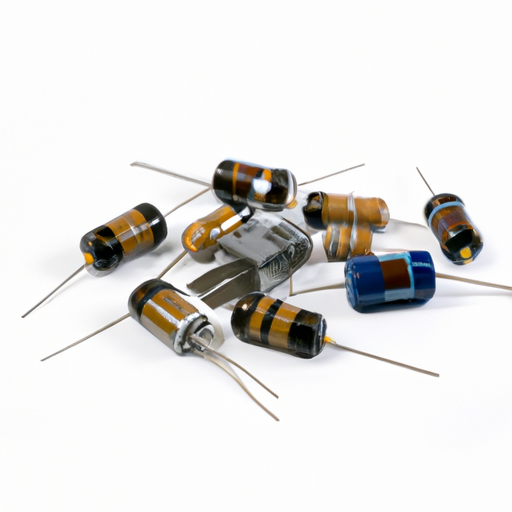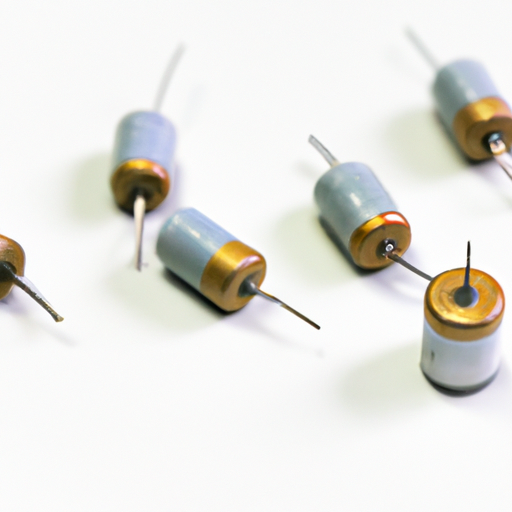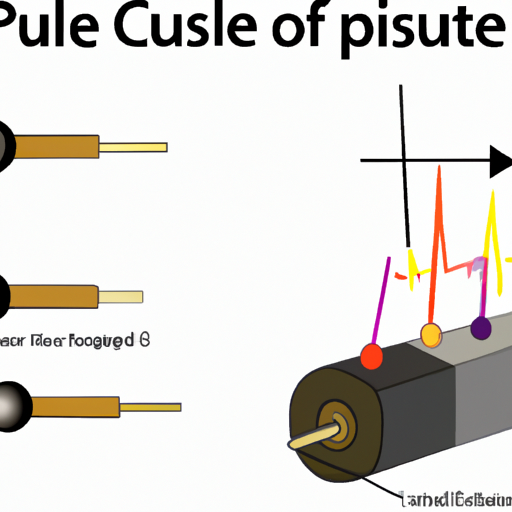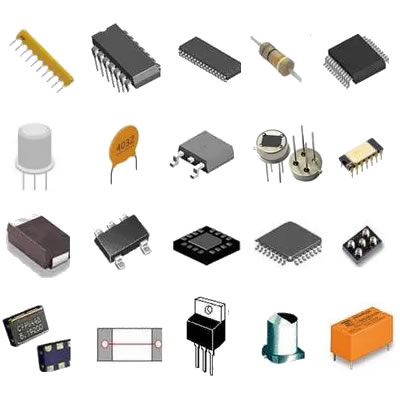What are the purchasing models of the latest capacitor series equipment components?
What are the Purchasing Models of the Latest Capacitor Series Equipment Components?
I. Introduction
A. Overview of Capacitor Series Equipment Components
Capacitors are fundamental components in electronic circuits, serving various critical functions such as energy storage, filtering, and signal processing. They store electrical energy temporarily and release it when needed, making them essential in applications ranging from power supply circuits to audio equipment. Over the years, capacitor technology has evolved significantly, leading to the development of various types of capacitors, each tailored for specific applications and performance requirements.
B. Purpose of the Article
This article aims to explore the various purchasing models available for the latest capacitor series equipment components. By examining these models, we hope to provide valuable insights for manufacturers, engineers, and procurement specialists, enabling them to make informed decisions in their purchasing processes.
II. Understanding Capacitor Series Equipment Components
A. Types of Capacitors
1. **Ceramic Capacitors**: Known for their small size and high reliability, ceramic capacitors are widely used in high-frequency applications. They are available in various capacitance values and voltage ratings.
2. **Electrolytic Capacitors**: These capacitors are polarized and typically used in power supply applications due to their high capacitance values. They are essential for smoothing out voltage fluctuations.
3. **Film Capacitors**: Made from plastic films, these capacitors are known for their stability and low loss characteristics. They are commonly used in audio and RF applications.
4. **Tantalum Capacitors**: Tantalum capacitors offer high capacitance in a small package and are often used in compact electronic devices. They are known for their reliability but can be more expensive than other types.
B. Applications of Capacitors
Capacitors find applications in various fields, including:
1. **Power Supply Circuits**: Capacitors help stabilize voltage and provide energy storage in power supply systems.
2. **Signal Processing**: In audio and communication systems, capacitors filter out unwanted frequencies and enhance signal quality.
3. **Energy Storage**: Capacitors store energy for later use, making them crucial in applications like renewable energy systems.
4. **Filtering and Decoupling**: Capacitors are used to filter noise and decouple different stages of electronic circuits, ensuring smooth operation.
III. Factors Influencing Purchasing Decisions
A. Technical Specifications
When purchasing capacitors, technical specifications play a crucial role. Key factors include:
1. **Capacitance Value**: The amount of charge a capacitor can store, measured in farads. Selecting the right capacitance is essential for the intended application.
2. **Voltage Rating**: The maximum voltage a capacitor can handle without failing. It is vital to choose a capacitor with a voltage rating that exceeds the operating voltage of the circuit.
3. **Tolerance and Temperature Coefficient**: These specifications indicate how much the capacitance can vary and how it behaves under temperature changes, respectively.
B. Quality and Reliability
Quality and reliability are paramount in capacitor selection. Factors to consider include:
1. **Industry Standards and Certifications**: Capacitors should meet relevant industry standards (e.g., ISO, RoHS) to ensure safety and performance.
2. **Manufacturer Reputation**: Established manufacturers with a track record of quality are often preferred to mitigate risks associated with component failure.
C. Cost Considerations
Cost is a significant factor in purchasing decisions. Considerations include:
1. **Budget Constraints**: Organizations must adhere to budget limits while ensuring they procure quality components.
2. **Total Cost of Ownership**: Beyond the initial purchase price, factors like maintenance, replacement, and performance should be considered.
D. Supply Chain Dynamics
Supply chain dynamics can significantly impact purchasing decisions. Key aspects include:
1. **Lead Times and Availability**: Understanding lead times is crucial for project planning. Delays can affect production schedules.
2. **Global Sourcing Challenges**: Sourcing components globally can introduce risks related to tariffs, shipping delays, and geopolitical factors.
IV. Purchasing Models for Capacitor Series Equipment Components
A. Direct Purchasing
Direct purchasing involves buying capacitors straight from manufacturers.
1. **Definition and Process**: This model typically involves negotiating prices and terms directly with the manufacturer.
2. **Advantages and Disadvantages**: While direct purchasing can lead to cost savings and better terms, it may require larger order quantities and longer lead times.
B. Distributor Partnerships
Distributors play a vital role in the capacitor supply chain.
1. **Role of Distributors in the Supply Chain**: They act as intermediaries, providing access to a wide range of products from various manufacturers.
2. **Benefits of Using Distributors**: Distributors often offer shorter lead times, smaller order quantities, and additional services like technical support.
C. Online Marketplaces
The rise of e-commerce has transformed how capacitors are purchased.
1. **Overview of Popular Platforms**: Websites like Digi-Key, Mouser, and Alibaba provide extensive catalogs of electronic components.
2. **Pros and Cons of Online Purchasing**: While online marketplaces offer convenience and competitive pricing, buyers must be cautious about product authenticity and quality.
D. Just-In-Time (JIT) Purchasing
JIT purchasing focuses on minimizing inventory costs.
1. **Concept and Implementation**: This model involves ordering components as needed, reducing the need for large inventories.
2. **Impact on Inventory Management**: JIT can lead to cost savings but requires reliable suppliers to avoid production delays.
E. Bulk Purchasing
Bulk purchasing involves buying large quantities of capacitors.
1. **Definition and Rationale**: This model is often used to secure lower prices and ensure a steady supply.
2. **Cost Savings and Risks Involved**: While bulk purchasing can lead to significant savings, it also carries risks related to overstocking and obsolescence.
V. Emerging Trends in Capacitor Purchasing Models
A. Digital Transformation
The digital landscape is reshaping purchasing models.
1. **E-commerce and Online Procurement Tools**: The growth of online platforms has made it easier for buyers to compare prices and access a broader range of products.
2. **Data Analytics in Purchasing Decisions**: Companies are increasingly using data analytics to optimize purchasing strategies and forecast demand.
B. Sustainability and Eco-Friendly Options
Sustainability is becoming a priority in procurement.
1. **Growing Demand for Green Capacitors**: There is an increasing interest in capacitors that are environmentally friendly and energy-efficient.
2. **Impact on Purchasing Strategies**: Companies are adapting their purchasing strategies to include sustainability criteria, influencing supplier selection.
C. Customization and Tailored Solutions
The demand for customized solutions is on the rise.
1. **Rise of Bespoke Capacitor Solutions**: Manufacturers are offering tailored capacitor solutions to meet specific application needs.
2. **Implications for Procurement Processes**: Customization can complicate procurement processes, requiring closer collaboration between buyers and suppliers.
VI. Case Studies
A. Successful Implementation of Purchasing Models
1. **Example of a Company Using Direct Purchasing**: A leading electronics manufacturer streamlined its supply chain by directly purchasing capacitors from manufacturers, resulting in reduced costs and improved quality control.
2. **Example of a Company Leveraging Distributor Partnerships**: A startup in the audio equipment industry partnered with a distributor to access a wide range of capacitors, allowing them to scale production quickly without significant upfront investment.
B. Lessons Learned from Purchasing Challenges
1. **Case of Supply Chain Disruptions**: A company faced delays due to global supply chain disruptions, highlighting the importance of diversifying suppliers and maintaining safety stock.
2. **Strategies for Overcoming Procurement Hurdles**: Companies that adopted flexible purchasing models and built strong relationships with suppliers were better positioned to navigate challenges.
VII. Conclusion
A. Summary of Key Points
In summary, understanding the purchasing models for capacitor series equipment components is essential for making informed decisions. Factors such as technical specifications, quality, cost, and supply chain dynamics play a crucial role in the purchasing process.
B. Future Outlook for Capacitor Purchasing Models
1. **Anticipated Changes in the Market**: As technology continues to evolve, we can expect further advancements in capacitor design and manufacturing, influencing purchasing models.
2. **Importance of Adaptability in Procurement Strategies**: Companies must remain adaptable and responsive to market changes, leveraging emerging trends to optimize their purchasing strategies.
VIII. References
A. Academic Journals
- Journal of Electronic Materials
- IEEE Transactions on Components, Packaging and Manufacturing Technology
B. Industry Reports
- Market Research Reports on Capacitor Technologies
- Industry Analysis from Electronics Weekly
C. Manufacturer and Distributor Websites
- Digi-Key Electronics
- Mouser Electronics
- Vishay Intertechnology
This comprehensive exploration of purchasing models for capacitor series equipment components provides valuable insights for stakeholders in the electronics industry, ensuring they are well-equipped to navigate the complexities of procurement in a rapidly evolving market.






